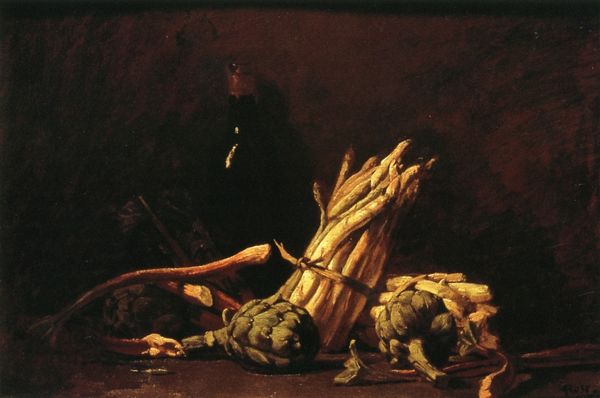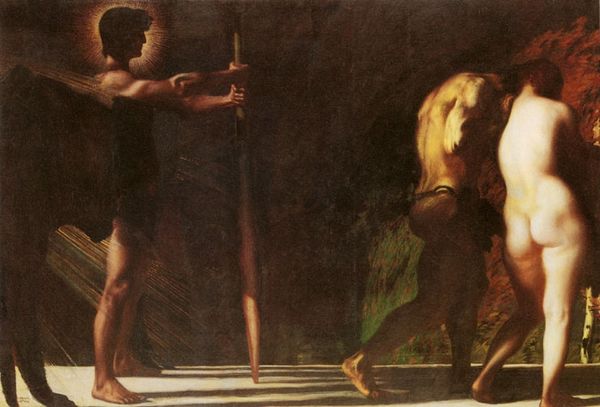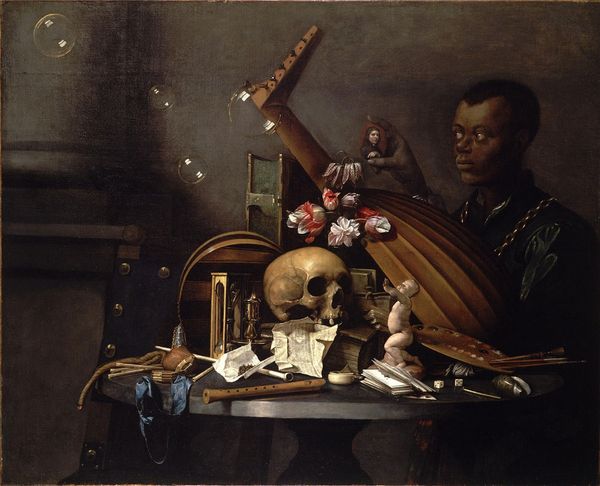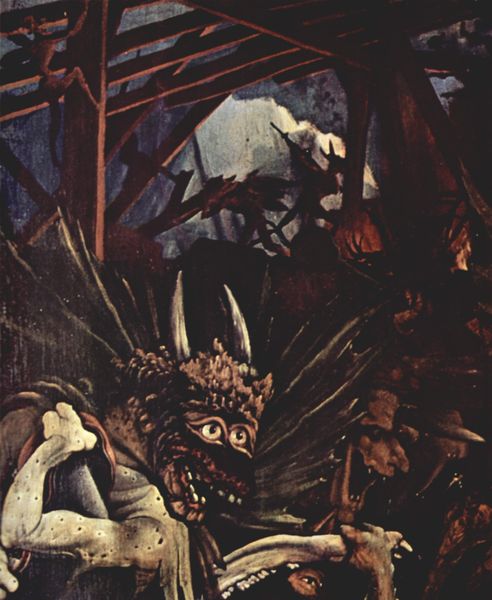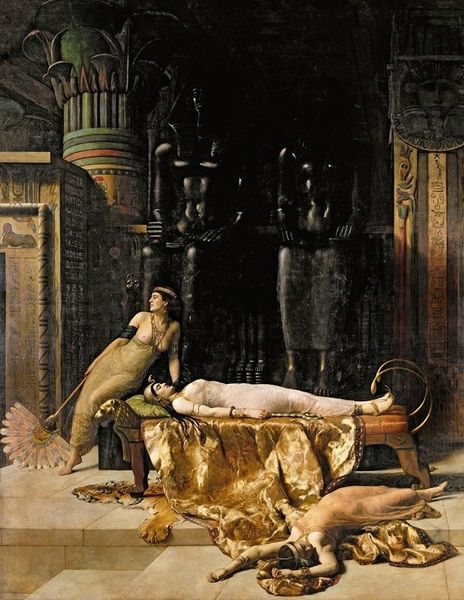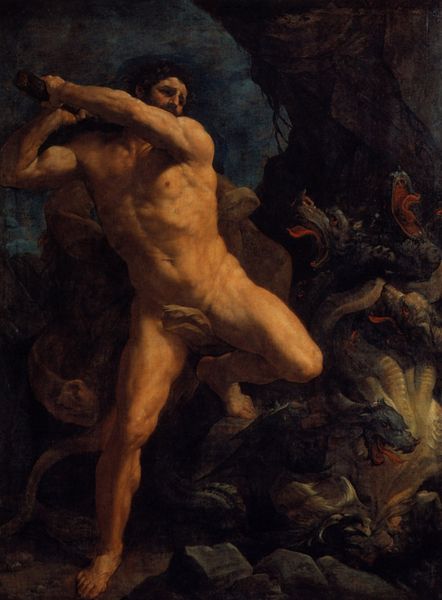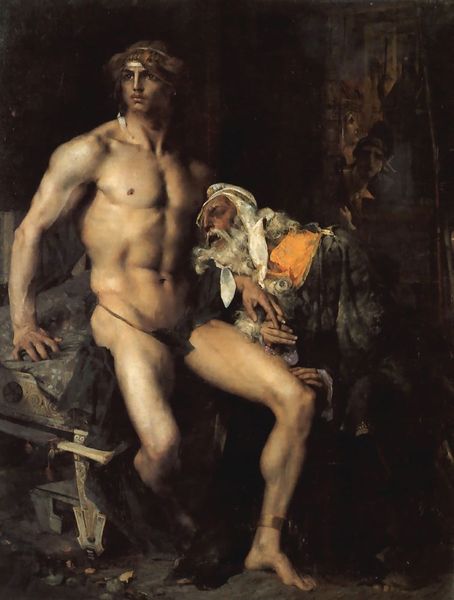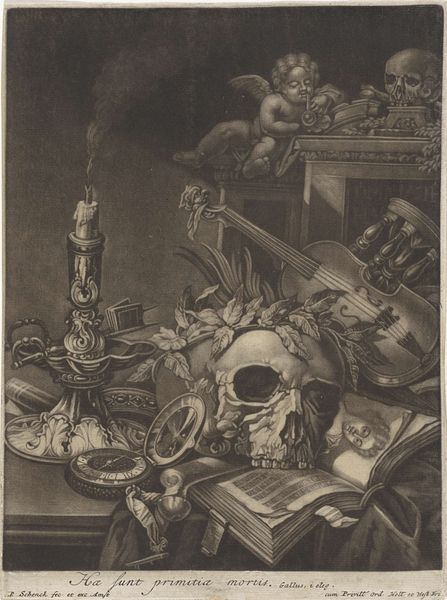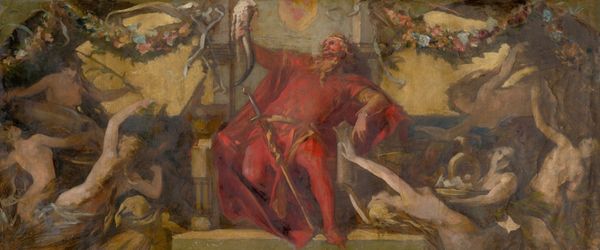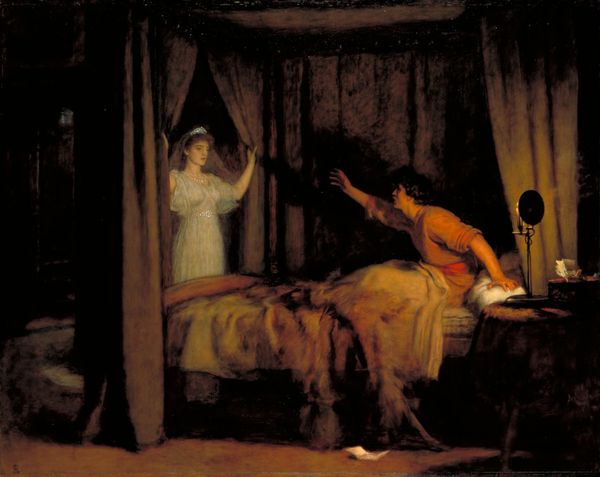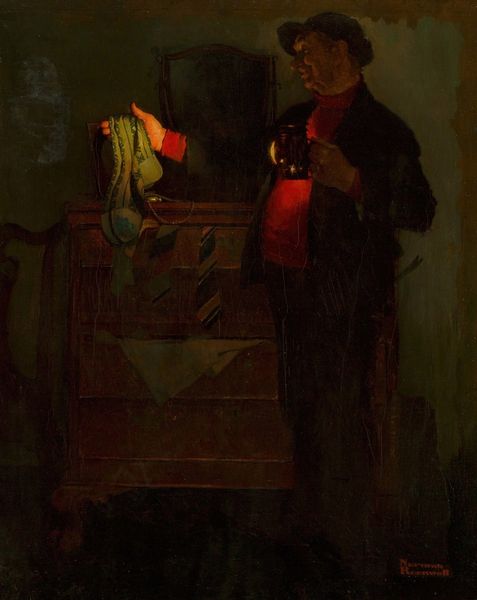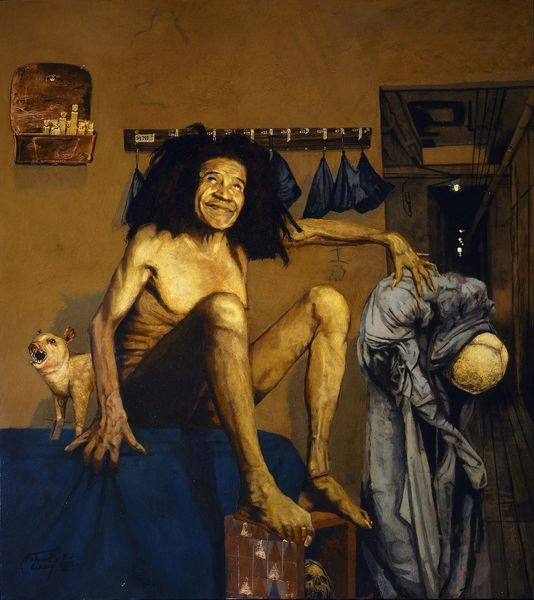
Dimensions: support: 921 x 708 mm frame: 1058 x 857 x 88 mm
Copyright: CC-BY-NC-ND 4.0 DEED, Photo: Tate
Editor: This is Samuel Butler's "Mr. Heatherley's Holiday: An Incident in Studio Life," held at the Tate. The studio setting feels both academic and morbid. What strikes you about its composition? Curator: The painting’s power lies in its juxtaposition of classical forms—note the various sculptures—with symbols of mortality. The skeleton, prominently placed, counters the idealized human form. Consider how Butler uses light. Where does it fall, and what does it reveal or conceal? Editor: It seems to highlight the contrast between the classical and the morbid, drawing attention to the skeleton while softening the classical sculptures. A dialogue, maybe? Curator: Precisely. Butler masterfully employs contrasting forms and light to create a visual discourse on the human condition. A discourse that extends into the arrangement of the objects, as well. It invites prolonged viewing. Editor: I see it now! Thanks for guiding me through it.
Comments
http://www.tate.org.uk/art/artworks/butler-mr-heatherleys-holiday-an-incident-in-studio-life-n02761
Join the conversation
Join millions of artists and users on Artera today and experience the ultimate creative platform.
This is Butler’s largest painting and is considered his most successful. Butler himself referred to this work as ‘important’. It was however, based on a joke. Mr Heatherley, who ran an art school in London that Butler attended, is pictured fixing a skeleton. The skeleton was regularly damaged by students who would dress it up in costumes or dance with it. The ‘holiday’ referred to in the title is also intended to be amusing. Mr Heatherley was notorious for never taking a holiday, preferring to stay in London and look after his studio. Gallery label, June 2019
